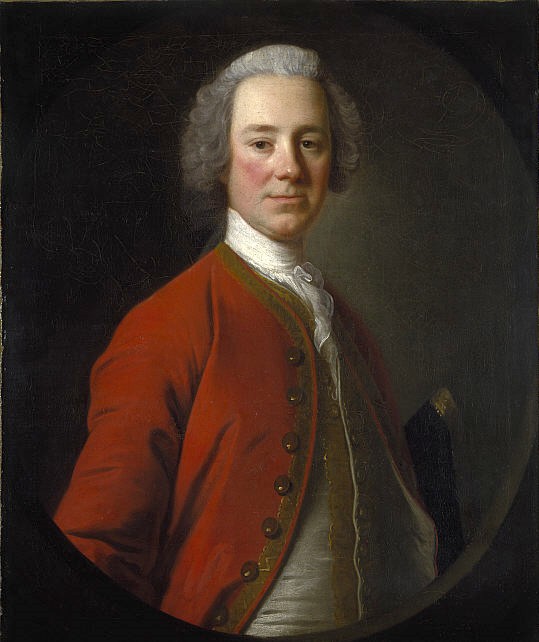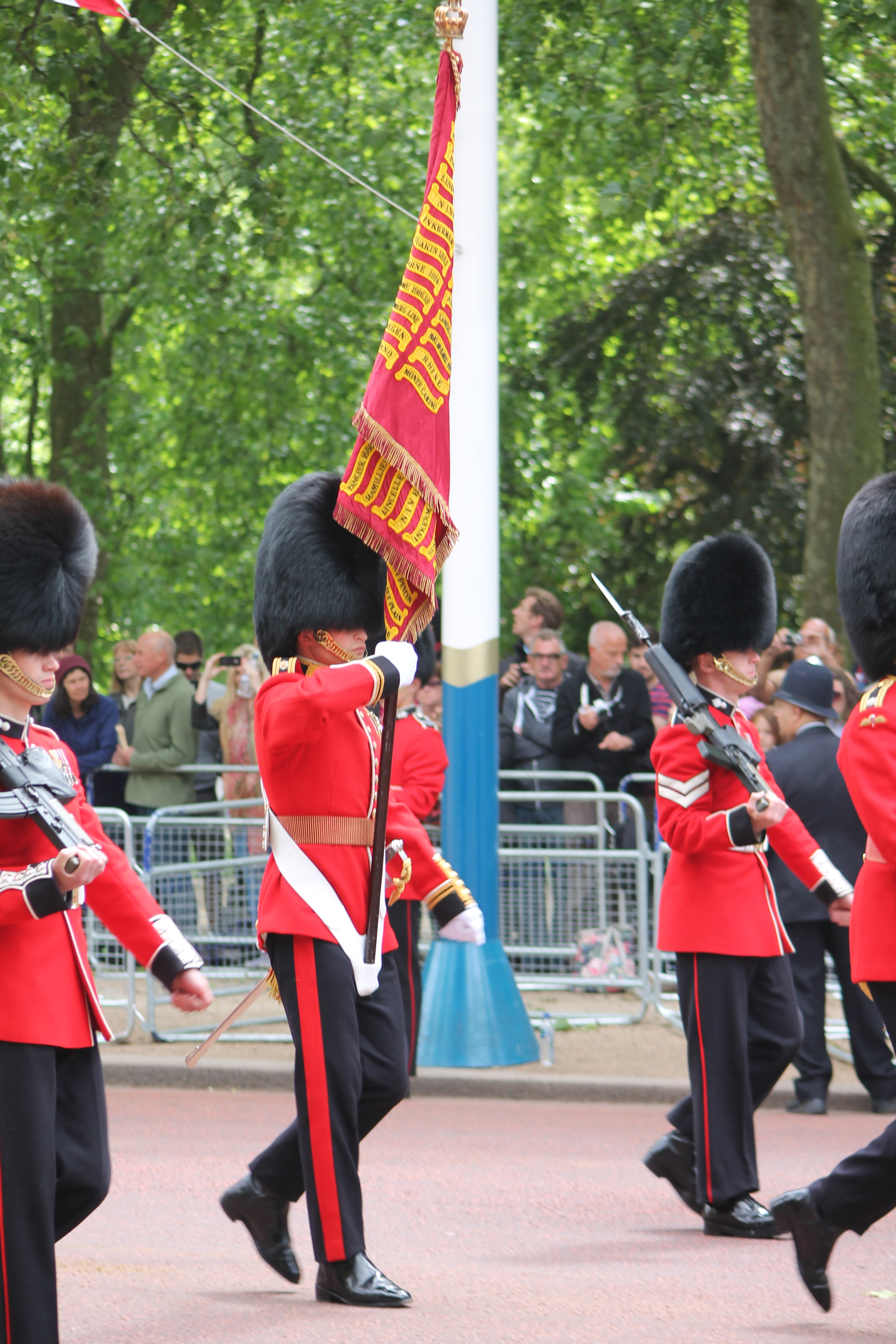|
George Monro (British Army Officer)
Lieutenant-Colonel George Monro (sometimes spelled "Munro") (1700–1757) was a Scottish-Irish officer in the British Army. He is best remembered for his unsuccessful defense of Fort William Henry in 1757 during the French and Indian War. After surrendering with full honours of war to the French general Louis-Joseph de Montcalm, he and his troops were attacked by France's Native allies. The events of the siege were made famous by James Fenimore Cooper in his novel ''The Last of the Mohicans''. Early life Monro was born in Clonfin, County Longford, Ireland in about 1700, younger son of George Munro, 1st of Auchinbowie who was famed for his victory at the Battle of Dunkeld in 1689 in Scotland. However, when John Alexander Inglis wrote his history of the Monro of Auchinbowie family in 1911, he had not at that time identified the younger George Monro as a member of the family. Monro joined Otway's Regiment, the 35th Regiment of Foot, as a Lieutenant in 1718. He appears to have ... [...More Info...] [...Related Items...] OR: [Wikipedia] [Google] [Baidu] |
The Last Of The Mohicans
''The Last of the Mohicans: A Narrative of 1757'' is a historical romance written by James Fenimore Cooper in 1826. It is the second book of the '' Leatherstocking Tales'' pentalogy and the best known to contemporary audiences. '' The Pathfinder'', published 14 years later in 1840, is its sequel. ''The Last of the Mohicans'' is set in 1757, during the French and Indian War (the North American theater of the Seven Years' War), when France and Great Britain battled for control of North America. During this war, both the French and the British used Native American allies, but the French were particularly dependent, as they were outnumbered in the Northeast frontier areas by the British. Specifically, the events of the novel are set immediately before, during, and after the Siege of Fort William Henry. The novel is set primarily in the area of Lake George, New York, detailing the transport of the two daughters of Colonel Munro, Alice and Cora, to a safe destination at Fort Willia ... [...More Info...] [...Related Items...] OR: [Wikipedia] [Google] [Baidu] |
James Fennimore Cooper
James Fenimore Cooper (September 15, 1789 – September 14, 1851) was an American writer of the first half of the 19th century, whose historical romances depicting colonist and Indigenous characters from the 17th to the 19th centuries brought him fame and fortune. He lived much of his boyhood and the last fifteen years of life in Cooperstown, New York, which was founded by his father William Cooper on property that he owned. Cooper became a member of the Episcopal Church shortly before his death and contributed generously to it. He attended Yale University for three years, where he was a member of the Linonian Society. Lounsbury, 1883, pp. 7–8 After a stint on a commercial voyage, Cooper served in the U.S. Navy as a midshipman, where he learned the technology of managing sailing vessels which greatly influenced many of his novels and other writings. The novel that launched his career was '' The Spy'', a tale about espionage set during the American Revolutionary War and publis ... [...More Info...] [...Related Items...] OR: [Wikipedia] [Google] [Baidu] |
Atlantic Monthly Press
Grove Atlantic, Inc. is an American independent publisher, based in New York City. Formerly styled "Grove/Atlantic, Inc.", it was created in 1993 by the merger of Grove Press and Atlantic Monthly Press. As of 2018 Grove Atlantic calls itself "An Independent Literary Publisher Since 1917". That refers to the official date Atlantic Monthly Press was established by the Boston magazine ''The Atlantic Monthly''. History and operations The company's imprints Grove Press, Atlantic Monthly Press, The Mysterious Press, and Black Cat (as of October 2018) publish literary fiction, nonfiction, poetry, drama and translations. Former imprints include Canongate U.S. and Open City. Its authors include Donna Leon, Kathy Acker, Samuel Beckett, Mark Bowden, William S. Burroughs, Frantz Fanon, Richard Ford, Charles Frazier, Jay McInerney, Jim Harrison, Henry Miller, Kenzaburō Ōe, Harold Pinter, Kay Ryan, John Kennedy Toole, and Jeanette Winterson. In 1990 the imprint Atlantic Monthly Press ... [...More Info...] [...Related Items...] OR: [Wikipedia] [Google] [Baidu] |
Massacre At Fort William Henry
The siege of Fort William Henry (3–9 August 1757, french: Bataille de Fort William Henry) was conducted by a French and Indian force led by Louis-Joseph de Montcalm against the British-held Fort William Henry. The fort, located at the southern end of Lake George, on the frontier between the British Province of New York and the French Province of Canada, was garrisoned by a poorly supported force of British regulars and provincial militia led by Lieutenant Colonel George Monro. After several days of bombardment, Monro surrendered to Montcalm, whose force included nearly 2,000 Indians from various tribes. The terms of surrender included the withdrawal of the garrison to Fort Edward, with specific terms that the French military protect the British from the Indians as they withdrew from the area. In one of the most notorious incidents of the French and Indian War, Montcalm's Indian allies violated the agreed terms of surrender and attacked the departing British column, whi ... [...More Info...] [...Related Items...] OR: [Wikipedia] [Google] [Baidu] |
Fort Edward (town), New York
Fort Edward is a town and the county seat of Washington County, New York, United States. The population was 10,205 at the 2011 census. The municipal center complex is on U.S. Route 4 between the villages of Hudson Falls and Fort Edward.Google Maps (383 Broadway, Fort Edward, New York) Retrieved Jan. 14, 2015.New York State Unified Court System (Washington County) Retrieved Jan. 14, 2015. When construction of the complex was completed in 1994, most of the administrative offices were moved from ... [...More Info...] [...Related Items...] OR: [Wikipedia] [Google] [Baidu] |
Parole
Parole (also known as provisional release or supervised release) is a form of early release of a prison inmate where the prisoner agrees to abide by certain behavioral conditions, including checking-in with their designated parole officers, or else they may be rearrested and returned to prison. Originating from the French word ''parole'' ("speech, spoken words" but also "promise"), the term became associated during the Middle Ages with the release of prisoners who gave their word. This differs greatly from pardon, amnesty or commutation of sentence in that parolees are still considered to be serving their sentences, and may be returned to prison if they violate the conditions of their parole. Modern development Alexander Maconochie, a Scottish geographer and captain in the Royal Navy, introduced the modern idea of parole when, in 1840, he was appointed superintendent of the British penal colonies in Norfolk Island, Australia. He developed a plan to prepare them for event ... [...More Info...] [...Related Items...] OR: [Wikipedia] [Google] [Baidu] |
Military Colours, Standards And Guidons
In military organizations, the practice of carrying colours (or colors), standards, flags, or guidons, both to act as a rallying point for troops and to mark the location of the commander, is thought to have originated in Ancient Egypt some 5,000 years ago. The Roman Empire also made battle standards a part of their vast armies. It was formalized in the armies of Europe in the High Middle Ages, with standards being emblazoned with the commander's coat of arms. General use As armies became trained and adopted set formations, each regiment's ability to keep its formation was potentially critical to its, and therefore its army's, success. In the chaos of battle, not least due to the amount of dust and smoke on a battlefield, soldiers needed to be able to determine where their regiment was. Regimental flags are generally awarded to a regiment by a head of state during a ceremony. They were therefore treated with reverence as they represented the honour and traditions of t ... [...More Info...] [...Related Items...] OR: [Wikipedia] [Google] [Baidu] |
General Daniel Webb
Lieutenant General Daniel Webb (died 11 November 1773) was a British Army general made famous for his actions during the French and Indian War. He purchased a commission as ensign on 20 March 1720. He was promoted to major of the Eighth Horse, in 1742, and served at the Battle of Dettingen in 1743. In April 1745 he was promoted lieutenant colonel of the regiment, and served at the Battle of Fontenoy. He was promoted to colonel of the 48th Regiment of Foot in 1755. Seven Years War Webb sailed to North America as a subordinate of Lord Loudoun who was travelling to become commander-in-chief of Britain's American colonies. Webb is best remembered for his role in the operations around Lake George in 1757, which culminated in the Battle of Fort William Henry. Believing a French prisoner report that the French army of General Louis-Joseph de Montcalm was 11,000 men strong,Nester, pp. 57–58 Webb refused to send any of his estimated 1,600 men north to relieve the besieged garri ... [...More Info...] [...Related Items...] OR: [Wikipedia] [Google] [Baidu] |
William Eyre (lieutenant-colonel)
William Eyre (died 1764) was an officer in the British Army during the French and Indian Wars. Early life Eyre served in the Royal Engineers during the Jacobite rising of 1745 and the War of the Austrian Succession.I.K. Steele (1974), "Eyre, William", ''Dictionary of Canadian Biography'', University of Toronto Press, vol. 3, pp. 214–215. North America Eyre came to North America in 1755 as a captain in 44th Foot. He was sent by General Edward Braddock to support to attend General William Johnson as military Engineer upon his expedition to erect Forts on the Hudson, at the foot of Lake George, and at Crown-Point. He was also made quartermaster general and director of artillery for the campaign, making three roles he filled as the only British regular officer in the otherwise American colonial militia and Mohawk Indian army of General Johnson. Eyre's planned Fort Lyman – later renamed Fort Edward – under orders from General Phineas Lyman. During the Battle of Lake G ... [...More Info...] [...Related Items...] OR: [Wikipedia] [Google] [Baidu] |
Lieutenant
A lieutenant ( , ; abbreviated Lt., Lt, LT, Lieut and similar) is a commissioned officer rank in the armed forces of many nations. The meaning of lieutenant differs in different militaries (see comparative military ranks), but it is often subdivided into senior (first lieutenant) and junior (second lieutenant and even third lieutenant) ranks. In navies, it is often equivalent to the army rank of captain; it may also indicate a particular post rather than a rank. The rank is also used in fire services, emergency medical services, security services and police forces. Lieutenant may also appear as part of a title used in various other organisations with a codified command structure. It often designates someone who is " second-in-command", and as such, may precede the name of the rank directly above it. For example, a "lieutenant master" is likely to be second-in-command to the "master" in an organisation using both ranks. Political uses include lieutenant governor in various g ... [...More Info...] [...Related Items...] OR: [Wikipedia] [Google] [Baidu] |
35th Regiment Of Foot
The 35th (Royal Sussex) Regiment of Foot was an infantry regiment of the British Army, raised in 1701. Under the Childers Reforms it amalgamated with the 107th (Bengal Infantry) Regiment of Foot to form the Royal Sussex Regiment in 1881. History Formation The regiment was raised in Belfast by Arthur Chichester, 3rd Earl of Donegall as the Earl of Donegall's Regiment of Foot or the Belfast Regiment on 28 June 1701 to fight in the War of the Spanish Succession. This was the second raising of the Earl of Donegall's Regiment: the previous regiment was raised in 1693 and disbanded on 8 February 1697: despite the names there was no lineal connection between them.Swinson, p. 132Trimen, p. 1 The regiment was a strongly Protestantism, Protestant unit tasked with resisting the spread of Catholic Church, Roman Catholicism in Britain. William III of England, King William III, gave special permission for the regiment to bear orange facings to show their religious allegiance and as a mark of ... [...More Info...] [...Related Items...] OR: [Wikipedia] [Google] [Baidu] |



_in_2008.jpg)



